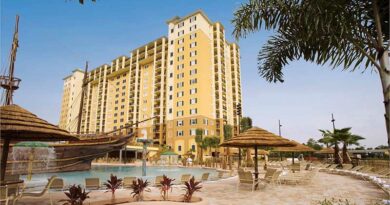Is Your Legacy Resort Sustainable?
The term “legacy resort” generally refers to hundreds of “sold out” resorts that were created prior to the 1990s that are managed by owners associations. Most are single site and smaller than newer resorts. Most have deeded ownership. Most have not been in active sales for many years. Most have an older population that constitutes the majority of its ownership base. Their owner base is shrinking as owners default or abandon their timeshare interests. While many are well maintained, their properties have smaller units and seem dated compared to those of newer resorts.
These are some of the challenges facing legacy resorts. What’s to be done?
The single most important task for an association is to commission an analysis of the resort to determine whether or not it is sustainable. A sustainability analysis will look at the state of the membership, the quality of its management and board of directors, the condition of the property, the financial circumstances of the association, including its operational budget, its debts, its reserves, its collections and the amount of bad debt, the legal structure of the resort, including its provisions for amending or terminating its organizational documents, the status of the legal title to its timeshare inventory and resort property, the effectiveness of its marketing outreach and communications with its owners, its comparison to other resorts in its market area, and other relevant information.
Once the profile of the resort has been established, the next important task is to identify its options. Should it continue on its present course with some adjustments? Should it downsize to fit the number of its units with the size of its membership and sell the surplus property? Should it merge with another local resort and gain strength in numbers? Should it dissolve the timeshare program and repurpose the property for another use?
These are difficult questions and should not be answered by a board of directors in isolation. It has a fiduciary responsibility to its owners to manage the resort properly in their best interests. Informational materials and meetings should be held with the owners to get their views. Consultation with legal counsel, real estate brokers, marketing companies and other service providers should be conducted as appropriate to give the board an understanding of the challenges of the options under consideration.
What should a board of directors be thinking about?
These are some of the considerations. Is the resort competitive with other resorts in its market area and likely to be so for years to come? If the membership is shrinking, how does the resort effectively sell its inventory? Are larger clubs or timeshare companies interested in acquiring the resort or blocks of timeshare inventory? What is the consequence to the control of the association? If that option is not viable, what is involved in establishing a sales program? Is the legal title of the timeshare inventory and resort property good and marketable? How much money is required to maintain and improve the resort property to satisfy existing owners and attract new ones? How does the resort create loyalty – personal touch through exceptional communications, fresh experiences, or attractive pricing and dues?
If the sustainability of the resort cannot be assured, is it feasible to downsize to a footprint that is sustainable? How would that be achieved and what would be the cost/benefit of such a course of action? Is there a local resort that could be a good merger possibility? How does one approach the merger prospect and explore the opportunity? If none of the other options makes sense, what is involved in terminating the timeshare program and selling the property? Will a termination result in meaningful proceeds to its owners?
How should a board of directors implement a plan?
Ultimately, the board of directors needs to produce a plan of recommended action and present it to the owners for approval. What approval is necessary will depend on the resort’s organizational documents. It is critical that the board get broad authority to execute the plan and be given discretion to modify the plan as necessary to achieve its ultimate objective. The authority should include the right of the board to execute documents on behalf of the owners.
Once the direction of the resort is determined, then the board must diligently carry out the plan of action. It is likely to take time, money and effort to accomplish. Inevitably, there will be surprises down the road, and the board will have to adjust the plan to respond. Experience has shown that one of the biggest headaches involves getting clear title to the resort property if the plan involves a sale. A board should employ professionals to assist it because much of the work is technical and complicated. However, if the plan is well conceived and realistic, at the end of the day a board will have discharged its fiduciary duty to the owners and leave them in a better place.
What directors should do right now.
The most important takeaway from this article is that doing nothing is not a choice. Every board of directors of a legacy resort needs to be thinking about the question of sustainability and what steps it should take to answer that question.
W. John Funk practices law with Gallagher, Callahan & Gartrell, P.C. in Concord, New Hampshire. He specializes in resort and finance law.



